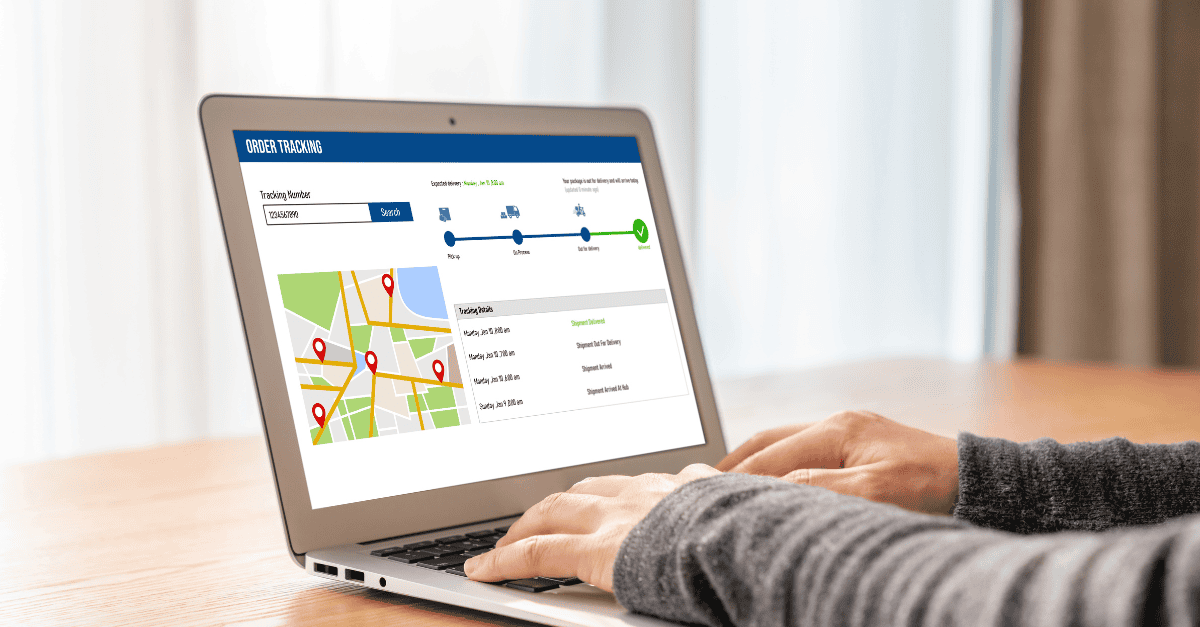
Retail insight: when to split baskets and when to split orders
Split shipments can be a retailer’s worst nightmare. They’re inconvenient, expensive and confuse customers. But to fulfil orders, sometimes they’re a necessity.
To further complicate matters, there are two points at which the split can be made: at the basket stage and after the order is placed. What’s the difference between the two? And when should you split baskets versus splitting orders?
As order management experts, OneStock helps brands and retailers solve these dilemmas and make smarter fulfilment choices. So let’s dive deeper into the challenges of managing split shipments – and how to limit their impact on your business.
What’s the difference between a split basket and a split order?
Most retailers will be familiar with split baskets and split orders, but if you’re new to these terms, here’s a quick explanation.
Split baskets and split orders both describe the action of getting goods to consumers in more than one delivery. The difference is when (and sometimes by whom) the delivery method is decided.
A split basket is driven by customer intent. Shoppers are told that their order will be split into more than one parcel when they get to the online checkout or receive delivery confirmation. They may even choose between waiting for both items to be delivered or getting one thing quicker by splitting shipments.
A split order is a back-end decision. Only after the consumer checks out can most retailers see available stock positions and understand that items can’t be fulfilled from a single location. For example, one item may come from the distribution centre (DC) and the other from the store. Some goods may be fulfilled directly and others through drop shipping.
Split baskets and split orders often affect retailers selling items of varying sizes, such as:
- DIY retailers selling small items like paint, brushes and screws alongside furniture and light fittings.
- Gardening retailers selling seeds and hand tools alongside garden furniture and fence panels.
- Homeware retailers selling cushions, ornaments and crockery alongside larger items like lamps and armchairs.
- Baby and children’s retailers selling clothes and accessories alongside nursery furniture, pushchairs and prams.
- Specialist retailers selling components and fully-built products, such as cycle shops and electronic equipment retailers.
What are the pros and cons of offering customers a split basket?
The main advantage of a split basket is customer awareness. Shoppers know from the outset how they will receive products and can even be involved in decision-making if you’re fulfilling both items directly.
This level of transparency manages people’s expectations and helps to ensure that longer lead times don’t compromise customer loyalty.
Another positive is convenience. Rather than waiting a week for both items, you can send customers part of their order in a couple of days. Demonstrating flexibility keeps people happy so they’re less likely to get frustrated with the delivery of the slower item.
The downside of split baskets is you can’t always offer consumers a choice. If one item is dispatched from your DC and the other via a drop ship company, your partner could work to a different service level agreement (SLA). Even when you’re fulfilling everything directly, if one item is in your warehouse and another is in a store 100 miles away, combining the order makes no financial or environmental sense.
Splitting shipments also costs you more money, as fulfilling orders from multiple locations means paying two sets of carrier fees. You can steer the customer towards a cost-effective option like click & collect (which will hopefully encourage additional spending). But some orders can’t be fulfilled with a mixed delivery proposition.
IN SUMMARY: when to split baskets: when delaying the entire order could upset the customer and cost you longer-term value. And when stock is located in different locations and cannot be cost-effectively combined.
What are the pros and cons of splitting customer orders?
Technically, splitting orders has no positives, as no retailer would choose this fulfilment method. Dispatching products from several locations is logistically challenging and more expensive. But sometimes split orders are a necessity.
The real question here is how to limit the negative impact of split shipments. For example:
- If customers aren’t notified about their split shipment, they’re not expecting to receive multiple order status updates or wait for two deliveries. This could lead to missed deliveries, making order fulfilment an even bigger cost drain.
- Equally, if no communication is made, customers might receive half their order and think you’ve forgotten to send the other part. This can be frustrating and even cost you future business.
- Without complete visibility of available stock, you can’t choose the most cost-effective fulfilment method or location. This means you can spend more fulfilling an order than you need to.
Is there ever a business case for splitting shipments?
We’ve established that split orders are best avoided, especially if the customer has placed a low-value order. But is there ever a reason to choose split shipments as your preferred fulfilment method?
The short answer is yes – depending on what you’re selling and how much inventory you hold. If your items are high in value and you have a relatively shallow stock pool, chances are you won’t have many SKUs in the same location. For example, if you’re a designer fashion retailer and a customer wants to order three jackets in different colours, each coat may be located in a different store.
In this scenario, it pays to swallow the cost of splitting shipments in favour of a quick and seamless delivery experience.
IN SUMMARY: when to split orders: when some products are fulfilled directly and some through a drop ship partner. And when operating with a shallow stock pool and selling high-value items.
How can you make split shipments less costly?
Split shipments are a necessary evil. But you can manage their impact by making intelligent fulfilment decisions.
Imagine a customer has placed an order with your business but only one item is available in your DC. Where do you fulfil the other product from?
Some retailers will make a judgement call with the data they’ve got to hand, which isn’t complete or accurate. Others will have detailed inventory information but manually decide the best stock location. Neither approach is ideal.
The best-prepared retailers will have OMS software with order orchestration to set rules for how and where split orders are fulfilled. These rules minimise fulfilment costs without impacting channel availability or disappointing the customer.
For example, your retail OMS may choose the five closest stores to the customer as the first fulfilment point. If that’s a no-go, it can expand the search to the nearest ten stores – and so on. It may ship both items from a store to avoid splitting the order. But if there’s no way to prevent it, your orchestration tool will determine the best way to get products to the customer.
The best-selling retail OMS software on the market will also factor in variables like basket size and customers’ delivery terms. For example, if your customer is buying low-value items, you want to get them shipped to them as cheaply as possible. Or if they’ve chosen same day delivery, some stock locations may be invalid.
Split shipments can be managed according to your requirements
Thankfully, split consignments are an edge case. They don’t happen every time. But when faced with a split basket or order, your business needs to see available stock locations and determine the optimal fulfilment choice.
Retail OMS software automates order orchestration to help you retain margin. The leading order management technology will make contextual decisions that reflect your real-time business conditions. We’ve already spoken about basket size and delivery options, but it can support other values, too – such as finding the greenest way to fulfil split shipments.
Whatever your priorities, look for a solution that allows you to manage fulfilment on your terms. Ultimately, it’s YOUR decide when to offer split baskets and when to offer split orders.
OneStock is a leader in distributed order management software. We empower retailers to unlock your full omnichannel potential and future-proof your business.


